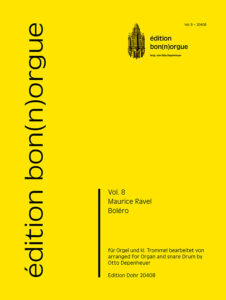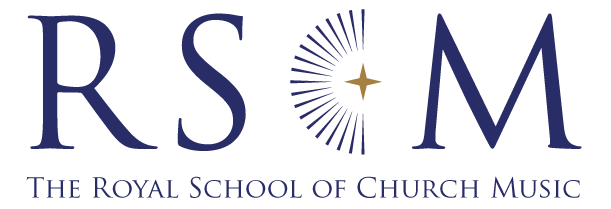Reviews of CDs
* Worth hearing
** Recommended
*** Essential listening
CHORAL CDs
***
FROM THE CELESTIAL HILLS: SACRED SCOTTISH CHORAL WORKS
University of Glasgow Chapel Choir / Eve Harling, Sophie Boyd (sopranos) / Kevin Bowyer (organ) / Katy Lavinia Cooper ✦ Convivium CR088
This album of Scottish sacred rarities is sung with conviction and skill by the chapel choir of Glasgow University. There are some familiar composers included in this recording: James MacMillan, Sheena Phillips, Rory Boyle, Martin Dalby and Ronald Stevenson to name but a few. Elisha James King’s Abbeville gets this disc off to a spirited start. The fourth of Ronald Stevenson’s Peace Motets (‘The Seventh Beatitude: Blessed are the peacemakers’) provides a more meditative moment. Kevin Bowyer and Katy Cooper’s arrangement of Ex Te Lux Oritur, O Dulcis Scotia – the wedding hymn of Margaret of Scotland to Eric of Norway (1281) – sees the choir singing a plainsong-type melody over an organ drone, before Kevin Bowyer masterfully creates a substantial organ interlude leading to a return of the hymn. Other highlights include MacMillan’s For a Thousand Years and John Angus’s The Sang of the Thrie Childrein. This is a wonderful recording and a great resource for anyone interested in Scottish sacred music. It is just a shame that the programme notes are lacking in substance and that texts are not provided (although sources are given).
Ian Munro
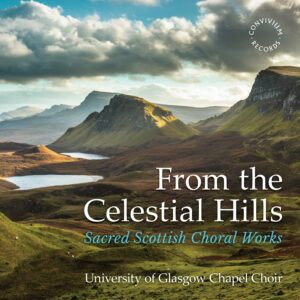
*
O BEATA VIRGO MARIA: RENAISSANCE AND CONTEMPORARY CHORAL WORKS
luminatus / Hannah Littleton (soprano) / David Bray ✦ Convivium CR090
We start in the late 16th century with the comparatively well-known Luca Marenzio (motet Iste Sanctus pro lege) and Guerrero (Missa Iste Sanctus) and the lesser-known Tiburtio Massaino (a six-section setting of O beata virgo Maria), but then jump to the 21st century, with works by Melissa Dunphy, Kerensa Briggs and Cecilia McDowall. The singing is accurate, if a little cautious, occasionally tentative and, dare one say, with an Anglican feel. If you like your Italian or Spanish Renaissance music performed with a little more Mediterranean flair, then the first part of the programme is probably not ideal for you.
But all is redeemed by the final 30 minutes of new music. Australian-American Melissa Dunphy’s name is not well known in the UK, but it should be. There is a timeless feeling about her Magnificat and Nunc Dimittis, where passages of beautiful repose swell into more passionate word painting. Kerensa Briggs, born in Truro where her father was then cathedral organist, is currently composer-in-residence with the Saint Louis Chamber Chorus in the USA. Her Alma Redemptoris Mater sets the Marian antiphon sung from Advent to Candlemas, and features a soprano solo that Hannah Littleton sings beautifully and expressively. The same soprano features in the Magnificat and Nunc Dimittis by Cecilia McDowall, her St Pancras Canticles. These are the most substantial pieces recorded here – skilful, imaginative, sure-footed compositions that bring the programme to a satisfying conclusion.
Judith Markwit

**
LIKE TO A FLOWER: CHORAL MUSIC BY ANNABEL ROONEY
Choir of Christ’s College, Cambridge / David Rowland ✦ Regent REGCD570
This is an attractive presentation of music by the British composer Annabel Rooney. Although active as a cellist and pianist, most of her works are for choir, and this disc of sacred choral music provides an excellent snapshot of her output. Superbly sung by the choir of Christ’s College, Cambridge, it treats us to a sumptuous feast of music including canticles, Mass settings and a selection of anthems. Some of her output may be familiar to listeners of BBC Radio 3’s Choral Evensong. There is a wide range from the peace and tranquillity of Keep me as the apple of the eye, The God of love my shepherd is and Jesu dulcis memoria to the jollity and punchy rhythms of the Gloria sections of the Magnificat and Nunc Dimittis in A minor. The close harmonies and dissonances of the Mass in C sharp minor are particularly highlighted in its Sanctus. This is an excellent introduction to the choral music of this promising composer.
Ian Munro

**
CLIVE OSGOOD: MAGNIFICAT
Excelsis / London Mozart Players / Amy Carson (soprano) / Robert Lewis ✦ Convivium CR093
Clive Osgood’s Magnificat was written as a companion piece to J.S. Bach’s BWV 243 setting, and lasts a similar length of time. The London Mozart Players provide a sensitive accompaniment; at times, however, the brass and timpani can be slightly overenthusiastic, affecting the overall balance. Amy Carson’s soprano solos are sung well and she has an attractive pure tone and little vibrato; however, some of the high notes of the ‘Et exultavit spiritus’ sound a little effortful. The choir sings the ‘Quia respexit’ with a sense of urgency; ‘Suscepit Israel’ is beautifully sung. For people looking for a new setting of the Magnificat, this one makes a nice addition to the repertory. The main disappointment is that the CD comes in at just under 32 minutes. Osgood’s biography suggests he has composed many other pieces that it would have been nice to have included on this recording.
Ian Munro
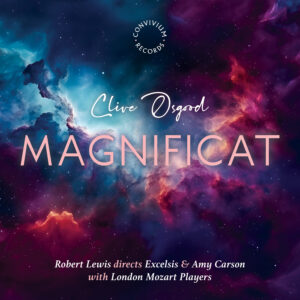
***
ELGAR: THE DREAM OF GERONTIUS 1900
Gabrieli Consort and Players / Polish National Youth Choir / Gabrieli Roar / Anna Stéphany (soprano) / Nicky Spence (tenor) / Andrew Foster-Williams (bass-baritone) / Paul McCreesh ✦ Signum Classics SIGCD785
This is not the sort of church music that we normally cover in CMQ, but the work is one that many church singers love to sing if they get the chance, and certainly listen to, so it seemed appropriate to give a mention to a superb and very different new recording. The clue is in the inclusion of ‘1900’ in the title, as this performance attempts to recreate the sound that might have been heard at the 1900 premiere, including an ‘Elgar orchestra’ with instruments mostly made in the 20 years before or after its Birmingham premiere. Elgar’s own trombone was even loaned by the Royal College of Music for the recording. It is not, however, just a historical exercise. It is refreshing to hear the sound of the combined youth choirs. Paul McCreesh is fluid with his tempi, exciting with the forward drive of the music while knowing when to allow the tempo to broaden. Anna Stéphany and Andrew Foster-Williams are excellent, while Nicky Spence sings the role of Gerontius as outstandingly as you are ever likely to hear it. There are extensive essays included in the luxuriously produced packaging. Buy this double CD set and you are never likely to approach ‘The Dream’ the same way again.
Julian Elloway
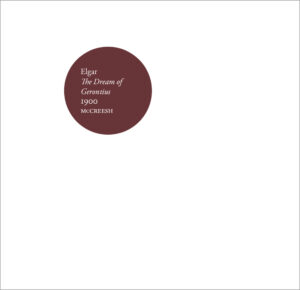
**
A YEAR AT NEWCASTLE
Choir of Newcastle Cathedral / Kris Thomsett (organ) / Ian Roberts ✦ Regent REGCD582
This comprehensive disc filled with wonderful goodies is a portrait of a liturgical year at Newcastle Cathedral. There are some substantial pieces, excellently performed, including Elgar’s Benedictus (from the Op. 34 Te Deum and Benedictus), Finzi’s Lo, the full, final sacrifice, Bairstow’s Sing ye to the Lord, Vaughan Williams’s Kyrie from his Mass in G minor and Howells’s Collegium Regale Te Deum. Other less-familiar works include Kris Thomsett’s Ubi caritas, Healey Willan’s Rise up, my love and Three Grace Anthems by Alan Gray. Ben Ponniah’s Litany to the Holy Spirit is a rewarding discovery, sung sublimely. Kris Thomsett accompanies with sensitivity and superb playing. Perhaps without the finesse of some of the most renowned cathedral or chapel choirs, this disc shows off a choir performing to a uniformly high standard. Music is alive and well at England’s most northerly cathedral.
Ian Munro

BOOKS
THE UNFRACTURED FAITH OF ERIK ROUTLEY: FROM BRIGHTON TO PRINCETON
Nancy L. Graham
Lexington Books / Fortress Academic 236pp.
HB 978-1-9787-1404-5 £77.00
e-book 978-1-9787-1405-2 £35.00
Erik Routley (1917–82) has been claimed to be ‘the most significant hymnologist of the 20th century’. Three years after his death, a 300-page book of remembrances, Duty & Delight, was published, with contributions from Alan Luff, John Wilson, Fred Pratt Green, Fred Kaan, Brian Wren, Caryl Micklem, Robin Leaver, Carlton Young and many more, showing the esteem in which he was held. His hymn tunes and texts have since been collected into a volume, Our Lives Be Praise. But his enduring legacy is his nearly 40 books on theology and music that present hymnology as a serious subject for study.
It has taken until now for a biography to appear that traces his life and work from Brighton, where he was born, through Magdalen College, Oxford and Mansfield College, Oxford (to where he was to return as chaplain, lecturer, librarian and director of music), on to Edinburgh, where particular attention is given to the influential Dunblane Music Consultations that he organized with Ian Fraser, then Newcastle, and finally across to Princeton and Westminster Choir College. This biography is based as far as possible on primary sources, with interviews and correspondence with family, friends and colleagues: it must be regarded as definitive. As J.R. Watson writes, the ‘book will be welcomed by all who are interested in the study of hymns’. Routley, a Congregationalist, was the first non-Anglican to be awarded an FRSCM.
Julian Elloway
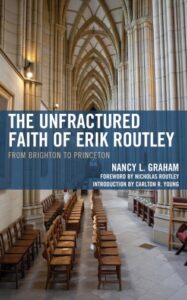
Reviews of printed music
E Easy
M Medium
D Difficult
ANTHEMS
MAY THE SPIRIT SING IN YOUR HEART [M]
Thomas Hewitt Jones
SATB (with divisions) and organ
Encore Publications 020768 £2.75
Composer Thomas Hewitt Jones has collaborated with author Gordon Giles for this year’s Music Sunday hymn, ‘Sing to the Lord, a new song of creation’. Here is another of their collaborations, from last year – an anthem written for the 70th birthday of Lindsay Gray. You can hear it on YouTube sung by Lindsay’s Cardiff choir, Caritas. The words concern music and praise, but also reflect on the Trinity (like a musical chord) and on the Spirit that releases ‘the music of God’s praise’. There is an enjoyable variety of musical treatment between choir and organ throughout the four verses.
IF WE BELIEVE THAT JESUS DIED [E/M]
Louisa Bagot
ed. Geoffrey Webber
SSATB and organ
Church Music Society RS157 £4.20
This five-part verse anthem by Louisa Bagot (1787–1816) must have been written when the composer was about 20, since the music was copied into partbooks at St George’s Chapel, Windsor in December 1808. It was in the repertoire there and at Canterbury Cathedral during the first part of the 19th century. The words, selected from 1 Thessalonians 4, Revelation 7 and Mark 11, are suitable for use generally throughout the year, during Advent and Easter seasons and for funerals and thanksgiving services. Within its nine minute duration, the music is full of variety of metre, tempo, dynamics and texture: it includes verses for SAB and SATB, a bass aria and a joyful final SSATB chorus of Hosannas.
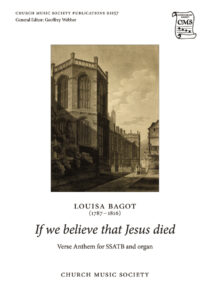
REJOICE! [M/D]
Will Harmer
SATB and organ
Encore Publications 020765 £2.95
O THAT MEN WOULD THEREFORE PRAISE THE LORD [M]
Phillip Moore
SATB and organ
Encore Publications 020562 £2.95
MY SPIRIT LONGETH FOR THEE [M/D]
Andrew Millington
SATB with divisions
Encore Publications 020774 £2.75
Although not yet 25, Will Harmer has been winning competitions and awards, and this setting of the first three verses of Psalm 33, Rejoice!, shows why. There is rhythmic energy, even in the more lyrical central section, that grips the listener. Choir and organ dance together, punctuating each other’s musical lines – exciting to sing and to listen to.
Philip Moore’s O that men would therefore praise the Lord, also an anthem of rejoicing, takes a rather more sedate approach, although as technically assured as one has come to expect from this composer. After a central section, ‘Let thy priests be clothed with righteousness’, there is a particularly effective build-up to ‘joyfulness’ and a musical recapitulation that pushes forward into an triumphantly concluding ‘praise the Lord’.
John Byrom’s poem Longing for Christ, starting in its original version, ‘My spirit longeth for thee’, is a ‘chain’ poem in which the last line of each verse is repeated at the start of the following. The words are a model of concision and simplicity. They receive an highly charged setting from Andrew Millington, with an emotional turbulence in B minor transformed by a final resplendent B major ‘Above!’.
James L. Montgomery
ANTHOLOGIES
A DISTANT MUSIC: AN ANTHOLOGY OF AUSTRALIAN SACRED MUSIC
EXCELSIS 1: 25 DESCANTS & LAST VERSE REHARMONISATIONS [E]
Voices and organ
Crescendo Music Publications 979-0-9022611-8-0 AU$49.95
PRAISE: PSALMS & PRAYERS 1 [E–D]
SATB and organ
Crescendo Music Publications 979-0-9022604-7-3 AU$49.95
This is the start of an ambitious project covering Mass settings, seasonal music, music for weddings, funerals and thanksgivings, and canticles and other music for the office, all written by Australian composers. The first volume has 23 descants, mostly also involving some reharmonization, plus two additional reharmonizations. Readers may be surprised at how Eurocentric is the choice of hymns. None of the hymn tunes is less than a century old (Love unknown, 1919, is the most recent), and there is a strong representation of the folksong-based hymns that Vaughan Williams produced for the English Hymnal. Some of the new harmonizations match the harmonic world of the originals; others ‘spice up’ the harmonies. The volume contains additional pages showing just the descant and melody lines, which may be photocopied for use by the choir.
The Praise collection of 20 psalm and prayer settings includes a wide variety of composers and musical treatments. Josephine Gibson sets the words of the Annunciation in et ait angelus ei: as a chant-like melody, unaccompanied and unharmonized – the music has a flexibility and lightness to depict the appearance and message of the angel. Joseph Twist’s Hear, O Israel is in English and Latin, with the Latin forming a rhythmic ostinato against the slow declamation of the two ‘great commandments’. Unaccompanied, and divided in up to eight parts plus two solo sopranos, it is one of the more difficult and extended pieces here. Brooke Shelley’s Ave maris stella enjoys rich harmonies with a contemplative feeling over two verses that begin and end quietly and trace the same musical arch, separated by a quiet central section. Unlike the pieces mentioned so far, both blessings included in the volume have keyboard accompaniment and are much easier. Michael Leighton Jones sets an Irish Blessing in a sweetly tuneful way that is attractively unfussy. Graeme Morton’s A Blessing fits John Newton’s ‘May the grace of Christ our Saviour’ to the Pange lingua plainchant, harmonized and alternating choir and organ. That is just a mention of a quarter of the contents – see the ‘A Distant Music’ website to explore further. Several of the pieces are available separately.
Stephen Patterson
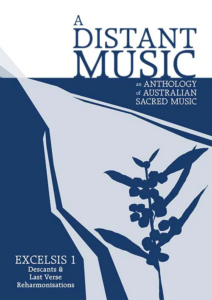
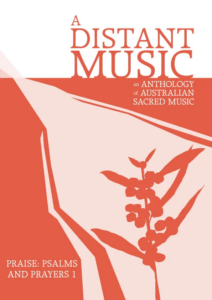
ORGAN MUSIC
E Easy
M Medium
D Difficult
MANUALS ONLY OR WITH EASY PEDALS
GOING FORTH: SIX EASY POSTLUDES [E]
Evelyn Stell
Fagus-music.com £12.00
Scottish music historian and organist Evelyn Stell has written a set of postludes that are nothing if not flexible. Conceived for two manuals and pedals, the pedal parts are optional and the manuals are playable on a single manual. The final postlude (No. 5) is even printed in separate versions with and without pedals (and counted separately to make the ‘six’ of the title). All are variable in duration, including an optional repeat before a coda. Evelyn Stell is particularly effective when working with pre-existing music, such as the postlude that takes off from the Eastertide Alleluia plainchant or the two based on movements from a Mass setting, but all five pieces are recommended for a cheerful ‘going forth’.
TWELVE PRELUDES AND POSTLUDES OP. 46 [E–M/E]
Carl August Kern ed. Ekkehard Koch
Edition Dohr (Universal Edition) 14101 £10.95
School teacher and organist, Carl August Kern (1836–97) composed over 100 children’s songs, and for organ no fewer than 28 sets of preludes and postludes with between 12 and 16 in each. The Op. 46 set comprises nine preludes followed by three postludes. The preludes are easy and need only a small two-manual instrument plus pedals. Some, including the two that incorporate a fugue, are somewhat dry, but others are rather charming. More interesting (and not quite so easy) are the three postludes – lively and with distinctive rhythms, each would provide an effective end to a service.
Duncan Watkins
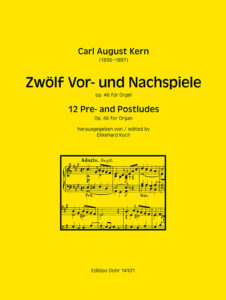
VOLUNTARIES
TOCCATINA [M/D]
Tim Knight
Knight Edition KE304 £5.95
PAEAN [M]
Gail Randall
Encore Publications 010034 £6.95
FANTASIA ON ‘ALL PEOPLE THAT ON EARTH DO DWELL’ [D]
Margaretha Christina de Jong
Bärenreiter BA11264 £17.00
Tim Knight’s Toccatina provides a fun, three-minute final voluntary, with a comparatively easy pedal part, and quaver patterns in the manuals that are nothing like as difficult as they sound. More inventive is Gail Randall’s Paean, with a little melodic motif that is tossed around at various speeds within a 5/4 metre. A contrasting middle section builds, incorporating elements of the first section, to a high-spirited, abbreviated restatement of the opening.
The Fantasia by Dutch organist Margaretha Christina de Jong is more substantial. An extended 74-bar introduction, based on varied treatments of motifs from the Nun danket theme, leads into the first full statement of the melody, firstly simply harmonized and then as a canon at the unison between manuals and 4ft pedals. A grandiose climax presents the melody triple forte in the pedals before a flamboyant ending. Needing a large instrument, this joyful treatment of a widely known melody would be a congregation pleaser.
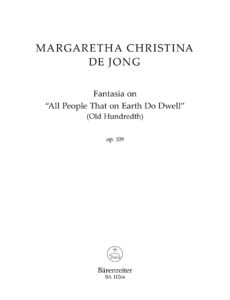
FOUR PAVANS, VOLUMES 1 AND 2 [M]
Thomas Tomkins and Thomas Weelkes
transcribed Paul Edwards and Geoffrey Atkinson
Fagus-music.com £10.00 each
There are eight pavans here: each volume contains four, two by Thomas Tomkins (1572–1656) and two by Thomas Weelkes (1576–1623), originally written for a consort of viols. The introductions include a thoughtful discussion about registration (including whether or not to register separately the pedal part), ornamentation and alternative accidentals. The transcribers correctly describe the pieces as ‘gravely beautiful movements’ – I look forward to playing them before funerals and other services when there is a solemn atmosphere to be reinforced.
Duncan Watkins
COLLECTIONS
TWELVE ECLOGUES AND FUGUES [mostly M]
Bernard W. Sanders
Edition Dohr (Universal Edition) 17641 £30.95
What is a musical eclogue? The composer’s introduction tells us: ‘The term “eclogue” originally designated a literary form which depicts a scene in the country or shepherd’s poetry’ and goes on to list other such terms used for music such as ‘poem’, ‘elegy’, ‘soliloquy’ or ‘parable’. One wonders why ‘prelude’ might not have sufficed, especially as each precedes a fugue, although the three eclogues with a 6/8 time signature might have a pastoral feel about them.
It comes as no surprise that the 12 pairs of pieces cover 12 keys, starting in A major and moving up in semitones. The choice of major or minor appears to have been at the composer’s discretion, although the result is that there are no key signatures with more than four sharps or flats. As for the music, it might be described as quirky, eclectic (12 eclectic eclogues?), and also charming. I found the music appealing, with clear-cut thematic motives treated unpredictably but enjoyably.
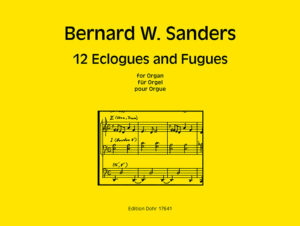
FESTIVE ROMANTIC ORGAN MUSIC [E/M]
ed. Andreas Rockstroh
Bärenreiter BA11260 £21.00
The subtitle tells us much of what we need to know: ‘Easy preludes and postludes of the 19th century’, to which one might add that the pieces are all short and by German composers, few of whom will be known to most English organists. Perhaps the best-known names are Michael Gotthard Fischer (1773–1829), Adolph Hesse (1809–63) and Gustav Merkel (1827–85). The 18 preludes were all originally entitled Präludium and the 14 postludes either Postludium or Nachspiel, and all intended for liturgical use at the start or end of a service. One’s interest is roused by the inclusion of a piece by Wilhelm Friedrich Ernst Bach (1759–1845), grandson and last male descendant of Johann Sebastian, but, alas, it is one of the more formulaic pieces in the volume. For the most part, however, these short pieces are full of musical interest and range in style from Viennese-derived classicism to post-Schumann romanticism. The volume is for practical use, with the pieces arranged by key and German instructions translated into English. The word ‘festive’ in the title is applied broadly: not all the pieces are in a major key and some are quiet. Brief biographical notes are included about each composer. It could be a useful volume of teaching pieces, as well as for liturgical use.
Julian Elloway
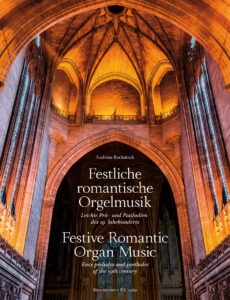
FANFARES FOR A KING [mostly M]
Church Organ World COW-2023-015 £25.00
The impetus for this collection of 16 organ fanfares was, of course, the coronation of King Charles. A few are Charles-specific, incorporating the melody of the National Anthem, or the letters CAROLUS REX, or even the ‘O pray for the peace’ section of Parry’s I was glad, but most are useful fanfares for all sorts of occasions, providing that you have a Tuba and/or solo Trumpet. Some are short flourishes but others are quite substantial, such as the 6 or 7 minute Coronation March by Clive Grey. As expected from COW publications, there are contributions from Ian Tracey (Fanfare ‘Vivat Rex Carolus) and Keith Harrington (The Imperial Tuba). Robert Cockroft’s Fanfare Reale, 60 bars of 3/8 time, is a contrast from the military march feel of many of the pieces. For a 78-page collection of 16 pieces by 16 different composers, the volume is good value for money.
Duncan Watkins
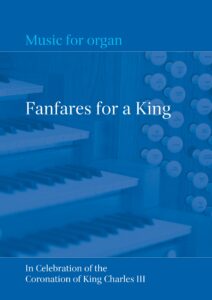
TRANSCRIPTION
BOLÉRO [D]
Maurice Ravel
arr. for organ and snare drum by Otto Depenheuer
Edition Dohr (Universal Edition) 20408 £15.95
At first glance this seems a bad idea – after all, the point of Boléro is Ravel’s masterly orchestration. But, in fact, this makes it an excellent vehicle to demonstrate the inventiveness possible on a large organ. Otto Depenheuer notes Ravel’s orchestration at every 16-bar repeat of the melody, but encourages players to discover their instrument’s own hidden and unusual sound resources, including using sub and super octave couplers. The music is cleverly made playable, especially where, in the original, the tune is played with parallel triads. A separate snare drum part is included. If you have a large instrument and adjustable pistons or a sequencer, find a snare drum player, have fun and try it out!
Duncan Watkins
